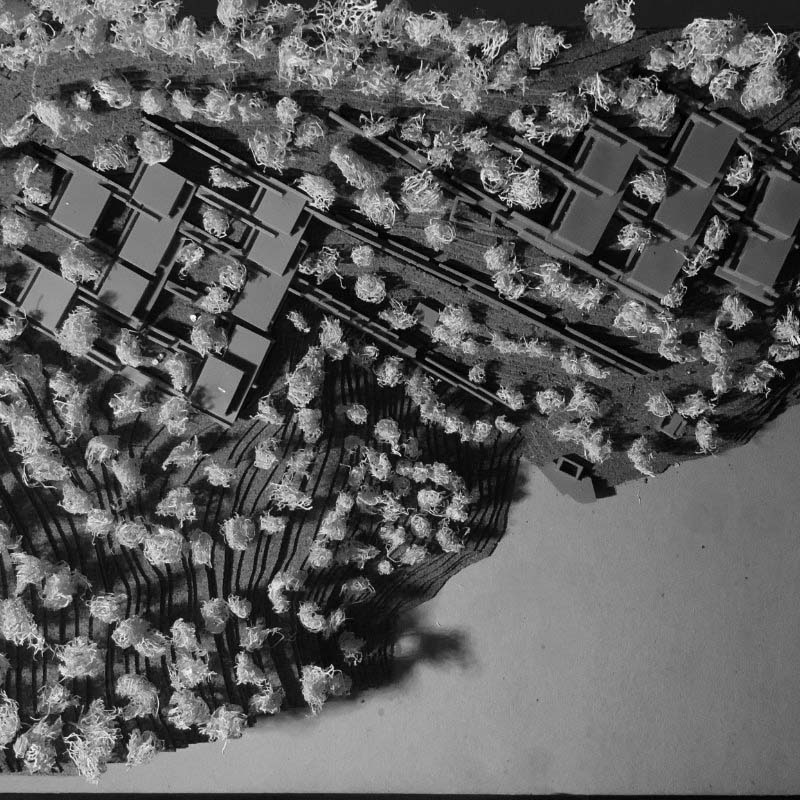

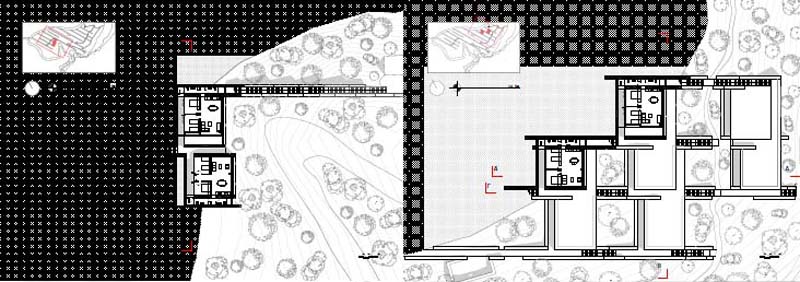

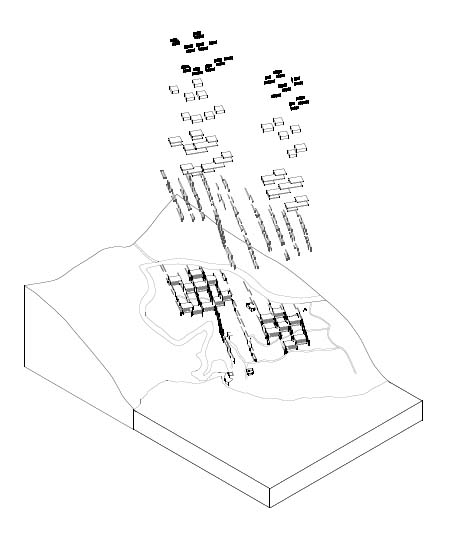



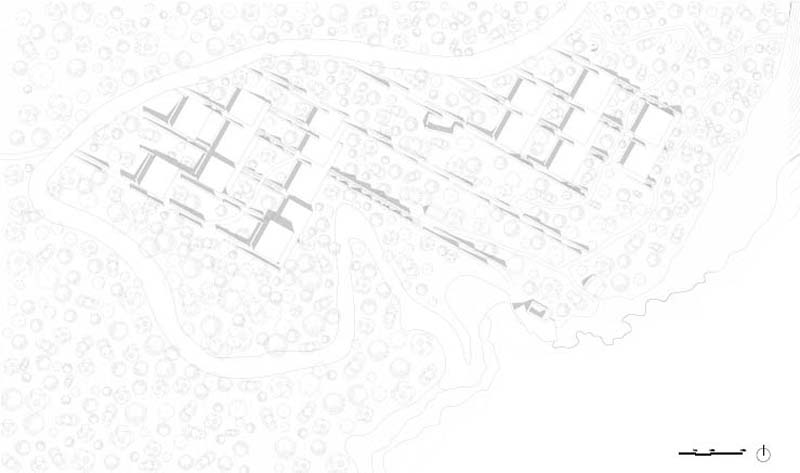



As I really wanted to experiment with the design of accommodation for vacation, I started searching for the ideal landscape to use as a plot. The reading of “Who remembers Alfons” was the starting point for this diploma. In the first part, I try to present Alfons’ history, his relation to the landscape of Koulouri in Pelion. His history is mainly presented through the eyes of people who knew him and photographic material that shows us his way of leaving and inhabiting the landscape.
After visiting Koulouri it seemed that the memory of Alfons leaves on only through some ruins. This diploma tries to reimagine the life in Koulouri according to the contemporary way of life. This new accommodation doesn’t mimic the ephemeral architecture of Alfons, but it uses modern construction methods and materials to create an architecture integrated in the landscape.
The main concept is to design straight paths that work supplementary to the existing paths. Concrete slabs are bridging the gap between these paths to create the accommodations. The produced units follow the contours of the ground.
In total, I designed 10 paths that are supporting 14 accommodations. These accommodations are of different types to host different groups of people.
Supervisor: Paniyiris Costis
Reference Number: 862


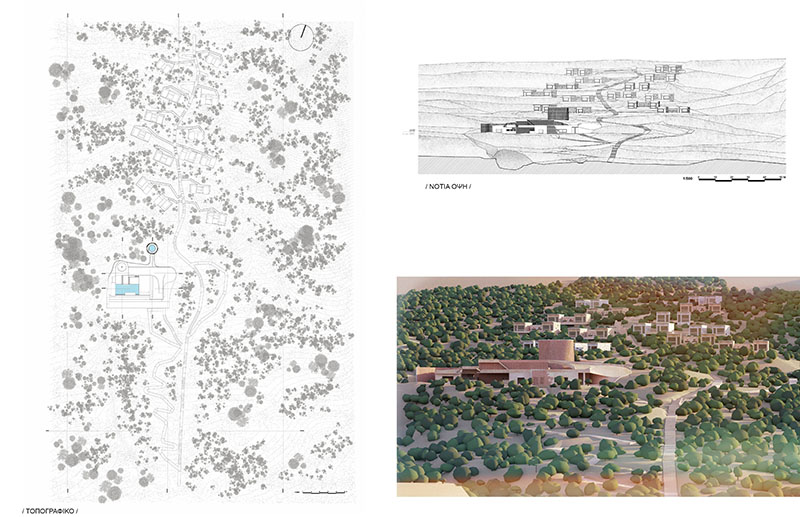

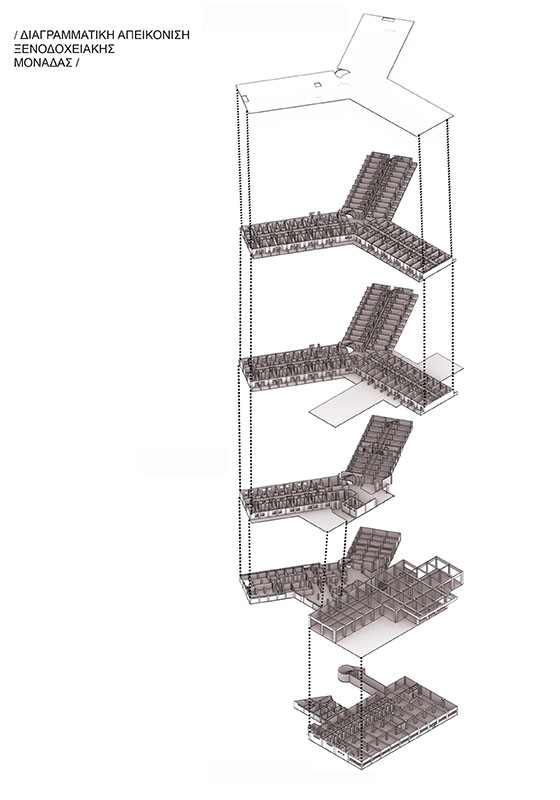

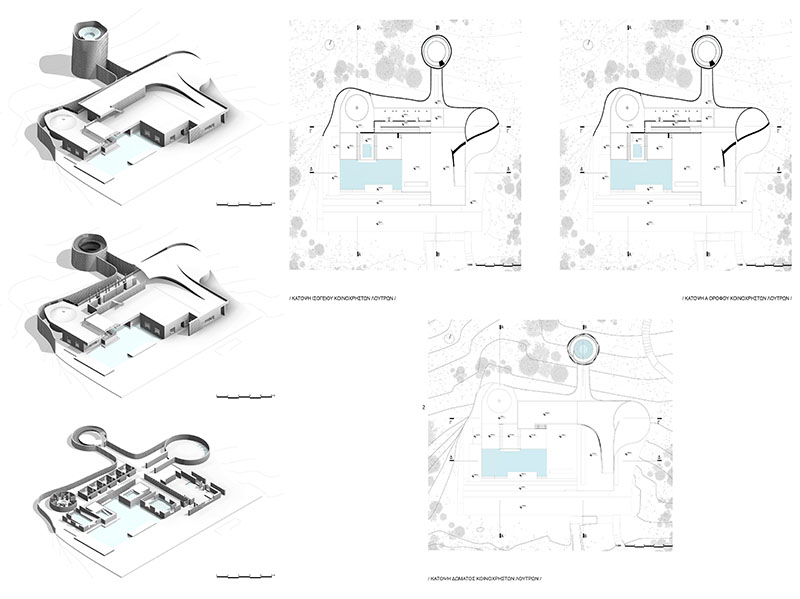

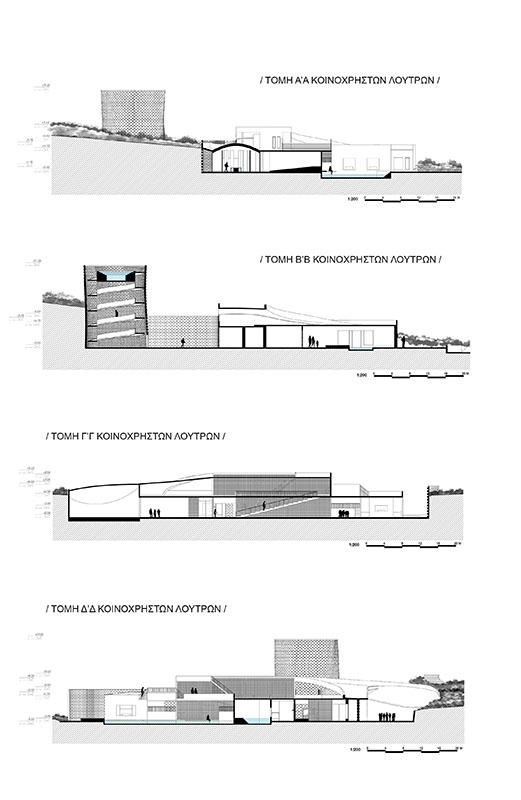

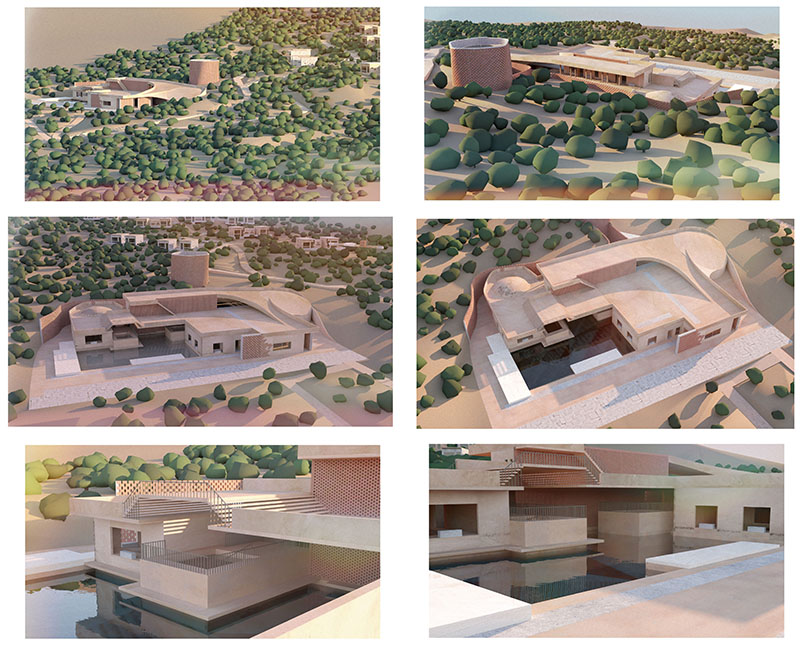

The rationale of the present diploma thesis is the creation of a unique bathing ritual where motions give birth to feelings and senses lead to wellbeing and thoughts, in a setting where architecture blends smoothly with the landscape.
The motive for this work was the existence of a ruined amphitheatrical healing spa of immense out-of-proportion size and of disparate shape in the country site, a haunted landmark in the summer vacation island of mine.
The challenge consists into the reshape of the existing building volumes, the architectural rectification, the smoothing out of the building components, the accomplishment of visual continuity and harmonic blend of natural and engineering components to achieve smooth flow and pleasant sequence of forms, style and sensations and ending up to the interchange of air and sea.
Supervisors: Paniyiris Costis, Kouzoupi Aspassia
Reference Number: 915
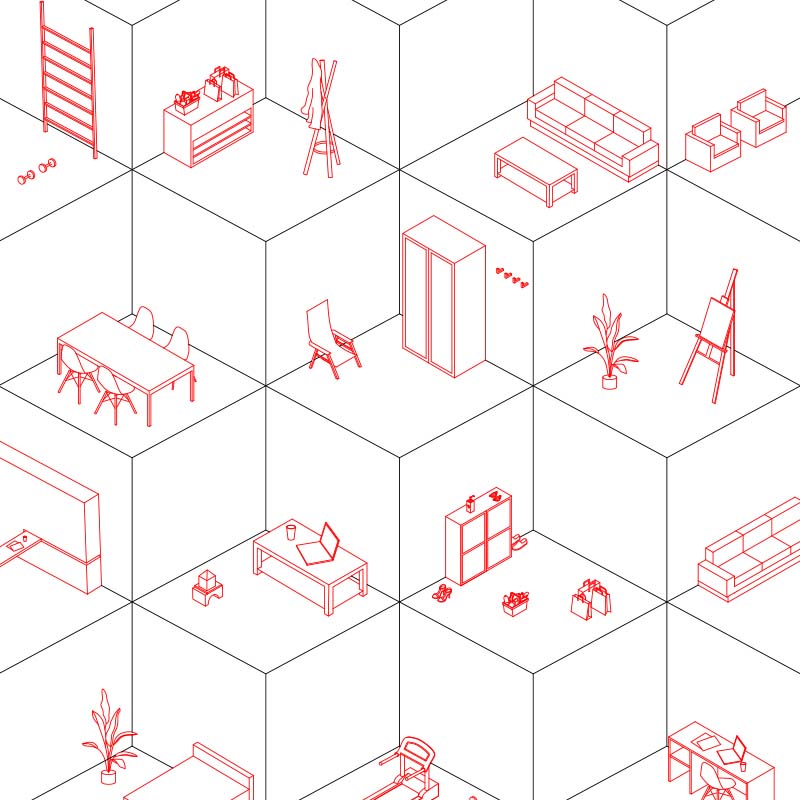

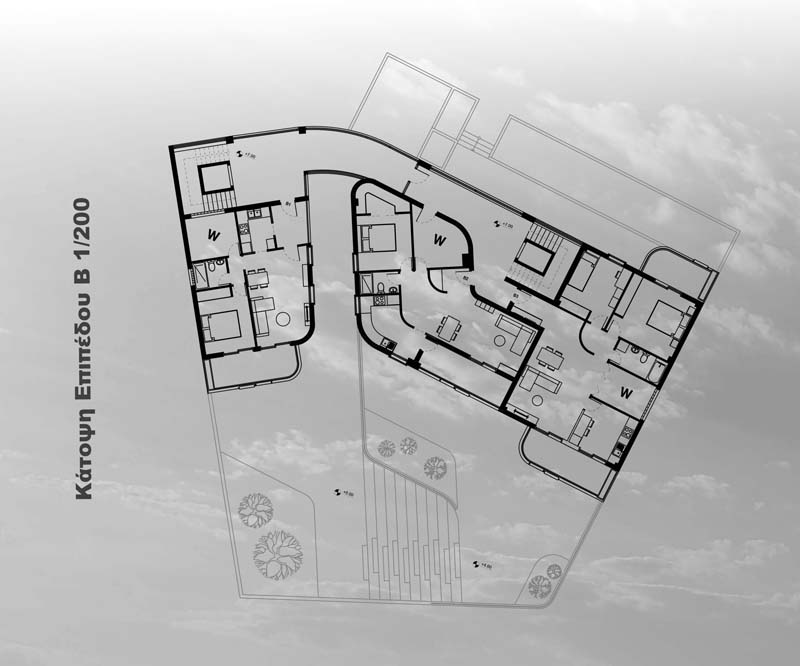

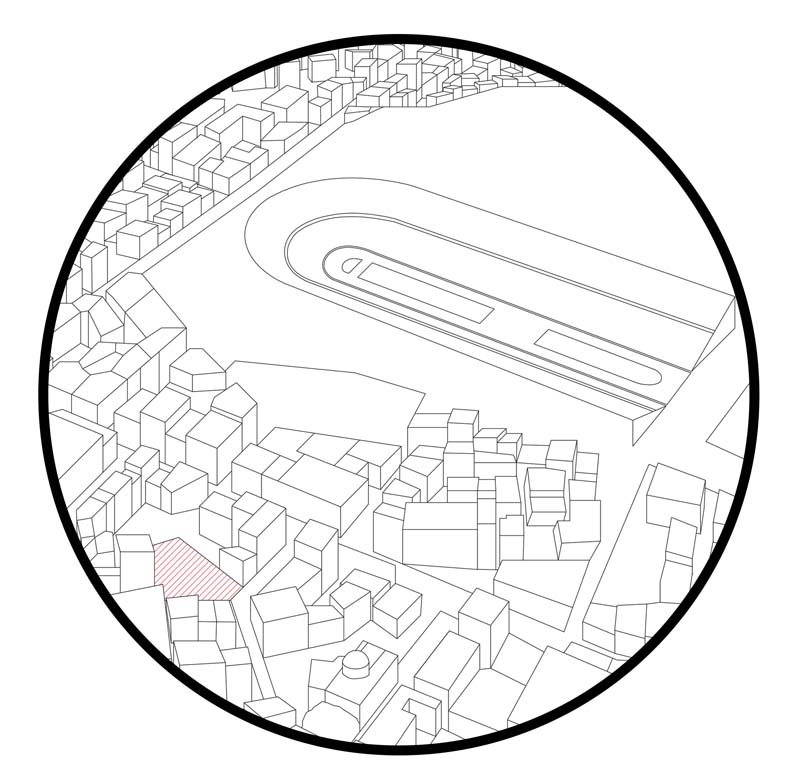



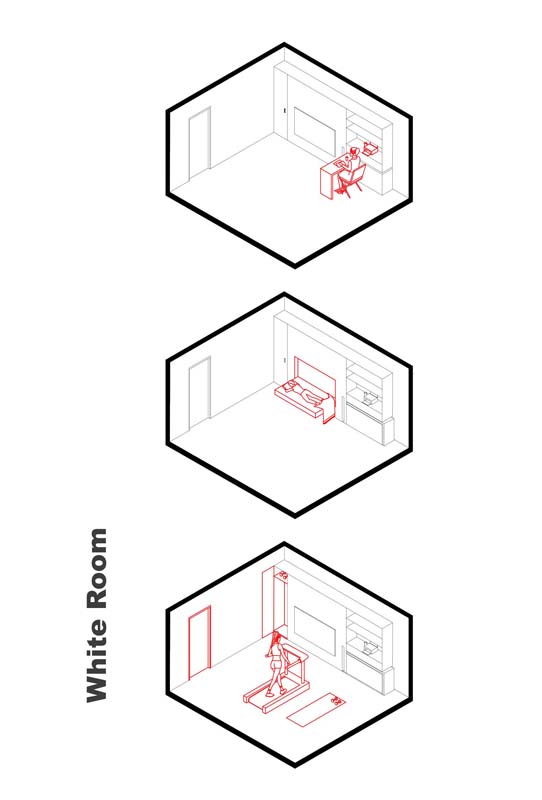

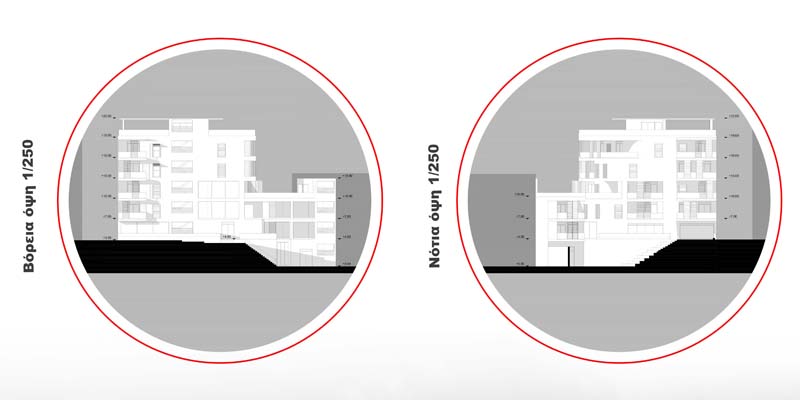

In 2020 the breakout and the rapid spread of Covid-19 Pandemic, came to challenge the coherence of the social structures, bringing humanity at the risk of a pandemic. To control the transmission as priority, social contact and overcrowding are restricted. Thus, for the protection of citizens, most governments worldwide, take strict measures to reduce affairs and transportation, adopting models of total quarantine. The prolonged period of restrictions brings modern man face to face with the conditions he has formed around him, limiting his needs within the, usually narrow, limits of his residence. Teleworking, sports, hobbies at home and the increased needs for cleanliness and hygiene, are some of the factors that shape the new housing condition. How easily the increased needs of modern man can "fit" in a house, when in most cases, it is an apartment in a building with high density and limited outdoor space? What are the characteristics of the post-Covid residence, which is structured in a new social reality?
This dissertation is the final stage of an annual study on the effect of diseases on architectural thinking and development, a continuation of the valuable research, presented in detail, in our research paper entitled “40 giorni | Building the cure”. Through questionnaires conducted in two phases during quarantine, the study anticipates shaping our ideas and thoughts about the future of home life. Our program, an apartment building in the heart of the Athenian center, harmonized with the conditions of the pandemic, is called to reformulate housing in modern terms, as they are shaped by the conjuncture of a disease, which affected an entire generation of people.
Supervisors: Gavrilou Evelyn, Tsangrassoulis Aris
Reference Number: 878


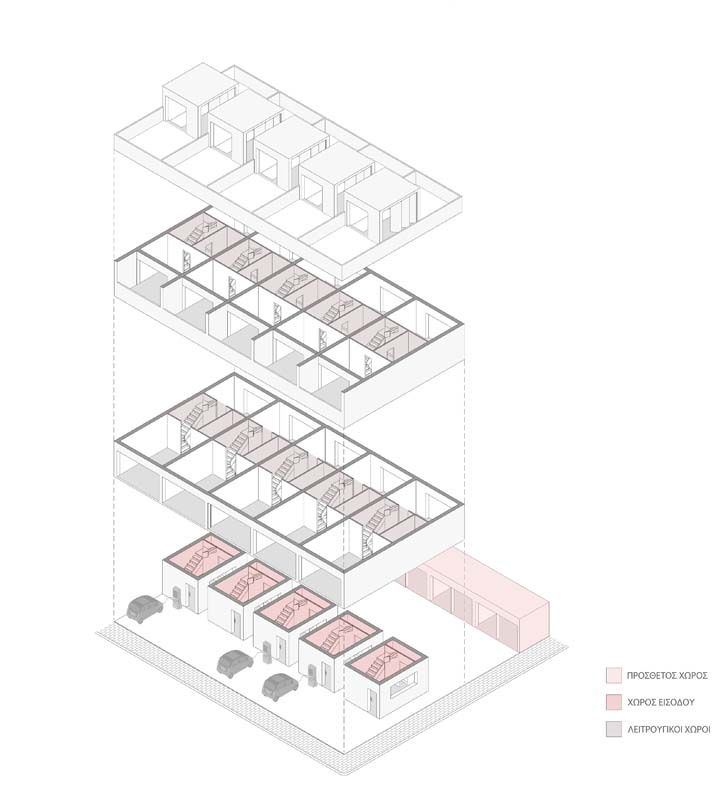

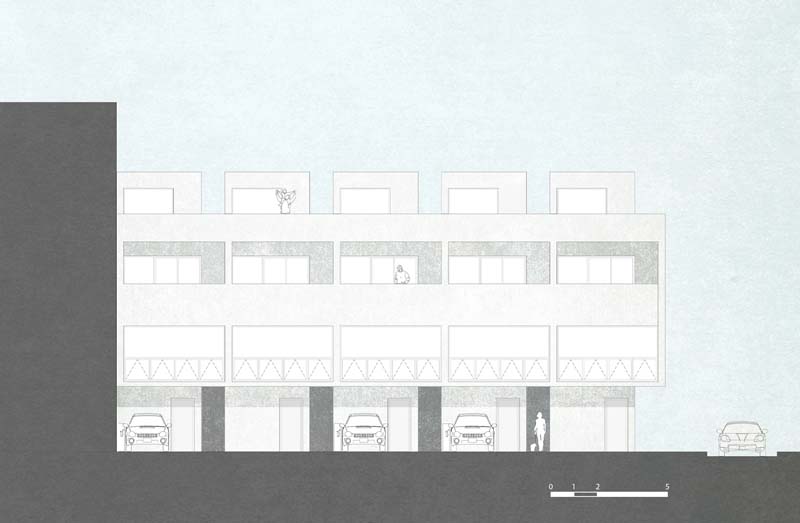

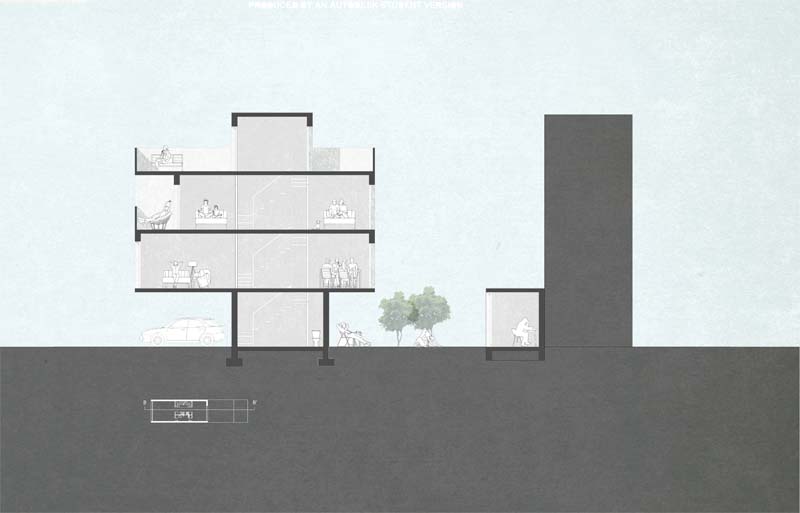

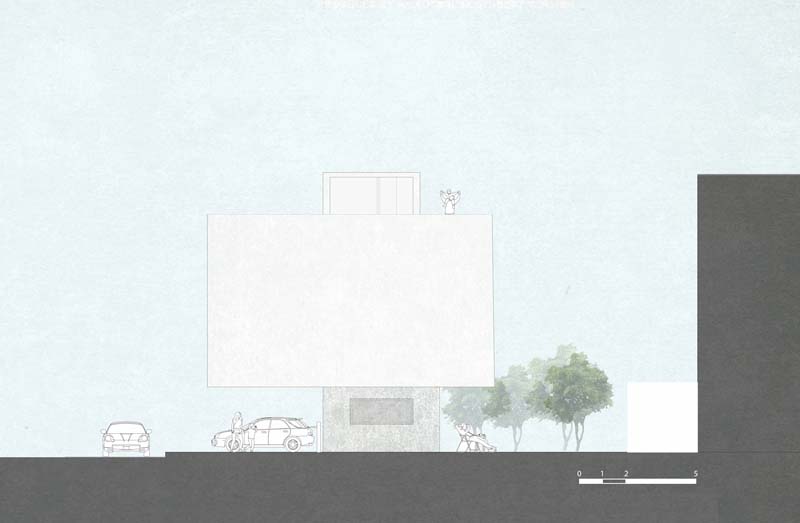

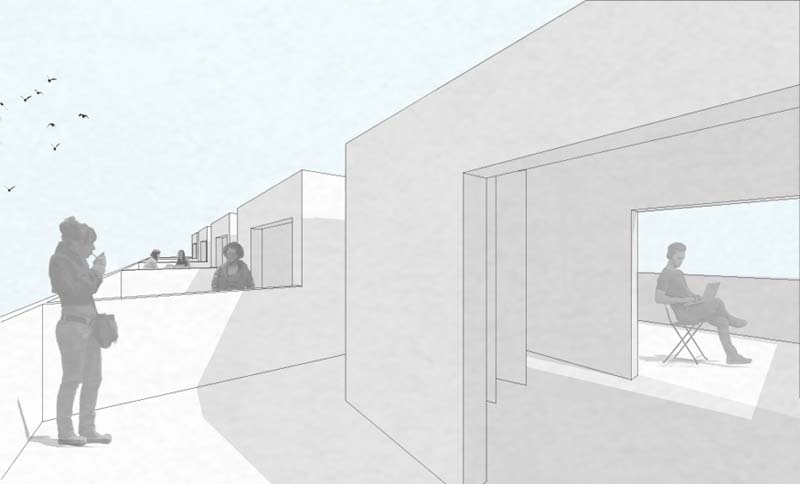

Over time, habitation has evolved motivated by the need to serve the daily routine and climatic conditions present in the given age and according to each region’s demands. Therefore, habitation reflects the operations conducted in the household, the position each of its members hold in it and consequently depicts how society works, through its various spaces and their arrangement.
The plot selected is situated in Holargos and its area is approximately 490 square meters. In its current state it includes a recently built apartment building consisting of five floors/apartments which replaced a detached house with the capacity of one apartment. The latter arrangement is characteristic of the fashion buildings are built in the area.
The purpose of this proposal is to investigate the preservation of the suburban character of the area while still embracing the continuous increase of the population density. The design highlights to ensuring the independence of the tenants within the coexistence conditions dictated by the housing complex.
Additionally, our analysis explores the following 21-century dipole; on one hand the modern way of life of the ever moving citizen, clashing with the static way of life as imposed by the quarantine during the restrictions due to the pandemic. What is demanded from this modern approach to housing, is the versatility of the space and its ability to change both in terms of time and in terms of the swapping between those two aforementioned extremes.
Five typologies of residential complexes are proposed, each consisting of five apartments. The design and building plan have resulted from the study of the general composition of households in the area, the nature of their construction and the observation of the life modern inhabitants lead as well as additional needs that have arisen due to Covid-19 and subsequent regulations imposed including quarantine.
Supervisor: Mitroulias Giorgos
Reference Number: 876
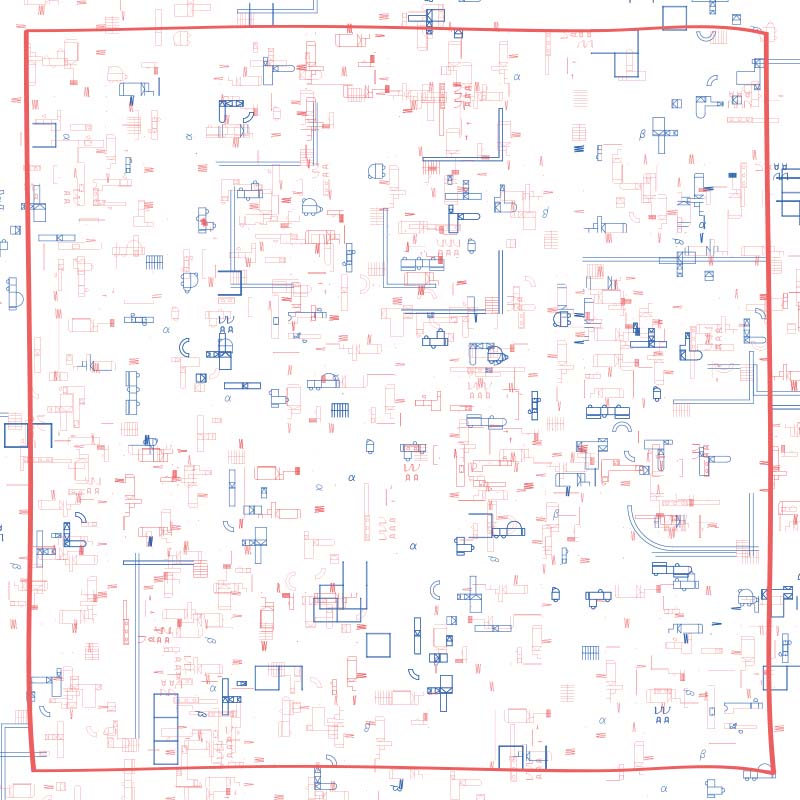

Our preliminary thought and question were how the term ‘residence’ could be the main part of our dissertation.
What is ‘residence’? In which categories is it distinguished? And finally, what characterizes ‘residence’?
Having chosen the thematic basis and studying the relevant theoretical framework, the next step is to think about the designing part.
Is it going to be a construction? A garment or a building? For sure, it will take place during the summertime.
And at this point, we start getting fascinated by moments from our personal experiences in Pelion. A personal archive of our summer excursions is collected and organized, while the special condition of the ephemeral summer stay is observed. Their different subjects, objects and their harmonization with the place create new living conditions in the countryside each time. Based on the different conditions of each visit, we classify 18 selected examples into subcategories of temporary accommodation. In particular, the most familiar one, Giannioti, compiles our case study to continue our designing part. After studying the concept of estivation, we come up with a design proposal for a temporary holiday accommodation in the area of Kalamaki-Limniona. The design proposal extends along a path and consists of 5 different types of facilities that complement the entirety of our stay. The housing development, the observatories, the workshop, the gardens and the swimming pools. Acting as excerpts in the landscape, they express moments of the holiday life, moments of necessity but also moments of pleasure.
Supervisor: Gavrilou Evelyn
Reference Number: 908
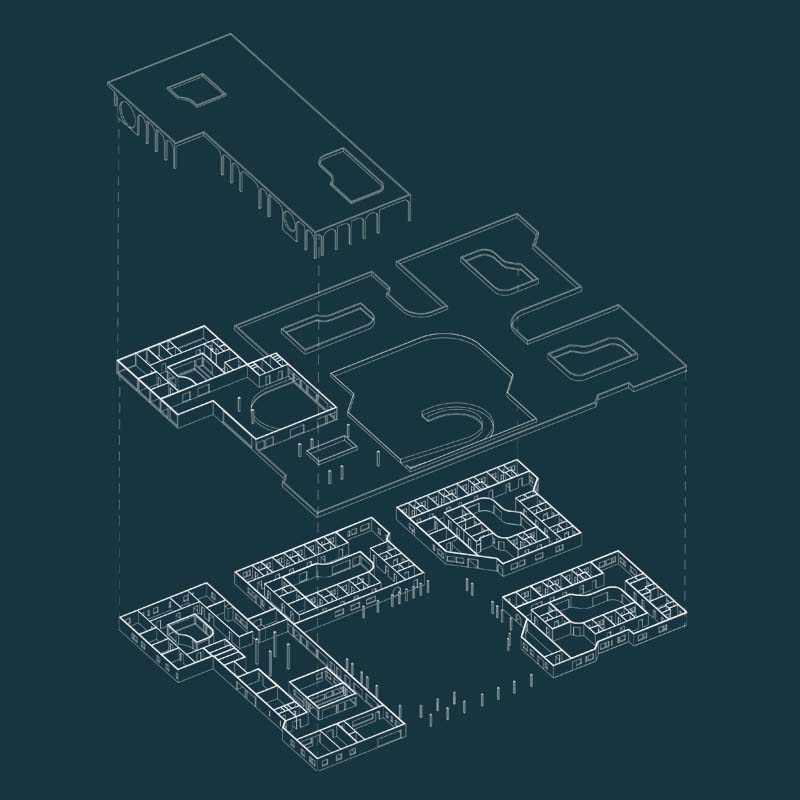

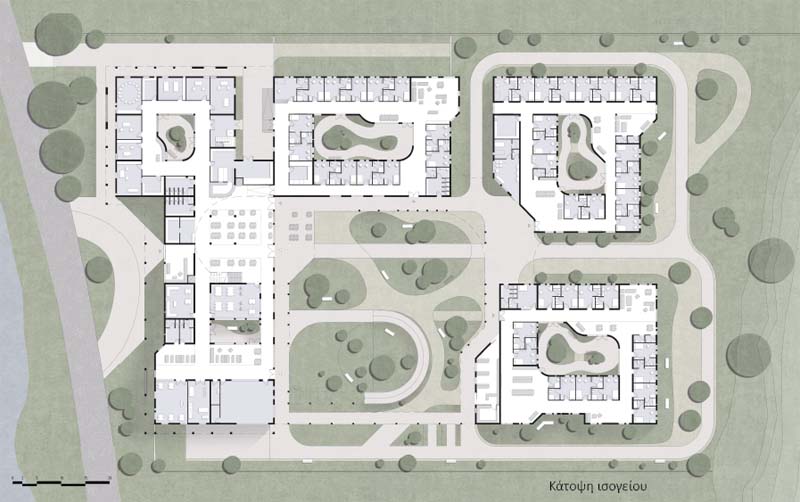

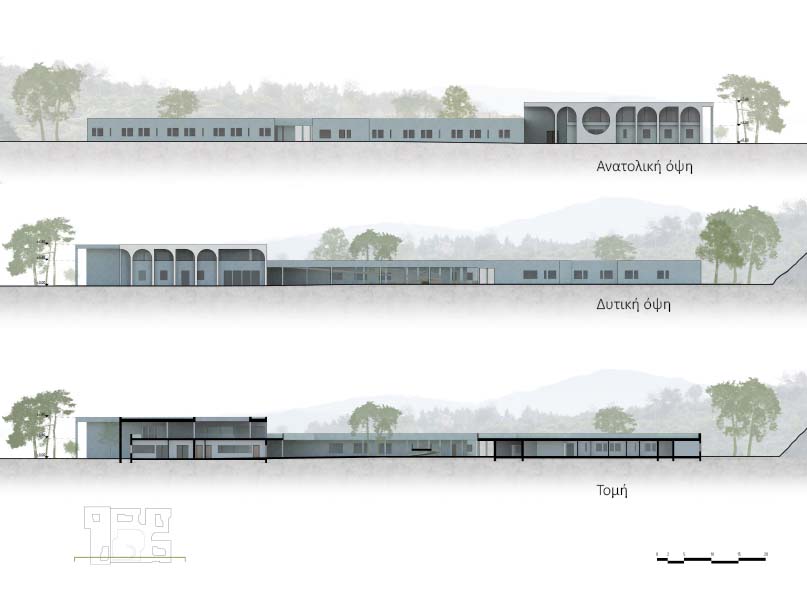





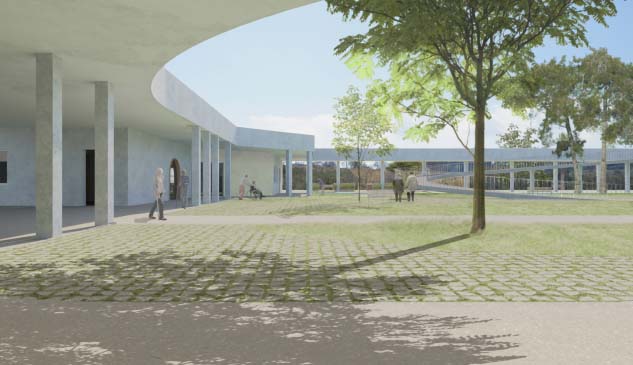

Due to the constant rise of the number of dementia cases, as our life expectancy continues to grow, arises an immediate necessity for the design of new facilities suited to the special needs of this illness. This thesis consists of a study for a new therapeutic care and support center for dementia, located in the district of Volos.
The compound is composed of the day care center and the unit for long term stay, which is divided to three smaller units. The center provides to the residents, their visitors but also to the public, the opportunity to participate in a variety of workshops, therapeutic programs, and seminars. In this way a connection between the facility and the community is established so as tοdecrease the feelings of isolation and alienation among the residents. By informing the general public, aim is also to affect the mentality of our society in order to create a community that accepts all of its members, while providing for them equal opportunities and a support network.
Considering a lack of therapy for the majority of dementia types, aim of the compound is the mental strengthening and the conservation of the abilities of people with dementia, in an attempt to continue their daily lives while retaining their quality of life. The space is suited to their specific needs, assisting them with a sense of dignity.
Moreover, informing the public seems not only beneficial but necessary, to continue the conversation of dementia diseases and open our community to the people who for now seem to be excluded.
Supervisor: Manolidis Kostas
Reference Number: 886
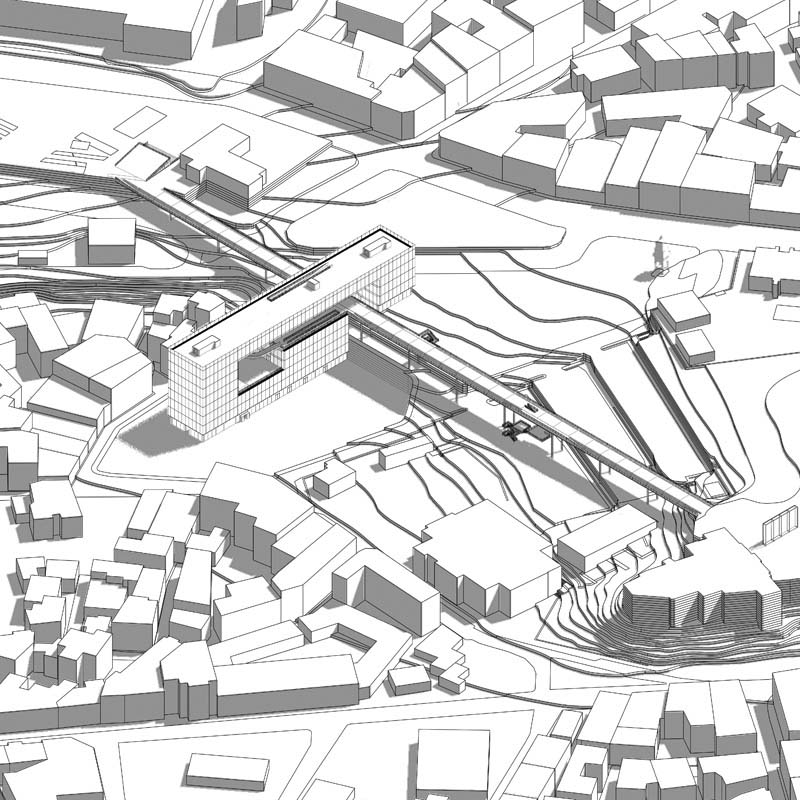



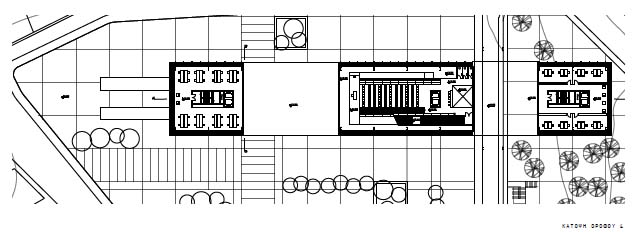



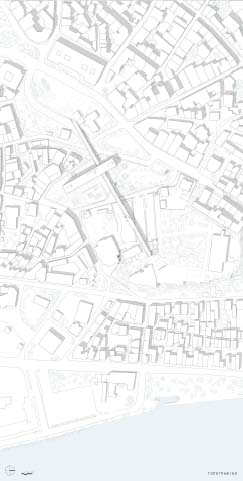

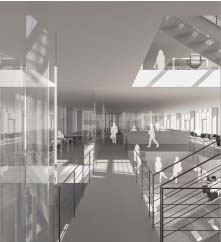

The new city hall of Ioannina: that seems like a straightforward, maybe even borderline boring subject for a diploma where you have the possibility to choose your subject freely.
In the first part we present a diary like presentation which follows our journey to choose a subject for our diploma. We try to understand how unfinished ideas and thoughts can be reinterpreted into something that seems completely different: What Exodus by Rem Koolhaas has to do with the new city hall of Ioannina?
In the main part we, firstly, present some data about the site and the city center of Ioannina which lacks many of the urban qualities that a city should have.
The new city hall, which is placed in a problematic site tries to resolve many of the complex urban problems Ioannina has and hopes to create a new urbanity. Our design is based in three main concepts:
1. A level skyline is shared by the city hall and other administrative buildings - that creates a new invisible but important upper square.
2. Transparency: the transparency is used both as a means to create new views for the lake and as a symbol of democracy.
3. The Athens trilogy is used as a paradigm of urban quality: we try to create a similar language by making a new axis which connects the city hall with other important buildings.
The city hall stiches the urban fabric and creates a new urbanity.
Supervisors: Paniyiris Costis, Papadopoulos Lois
Reference Number: 861

